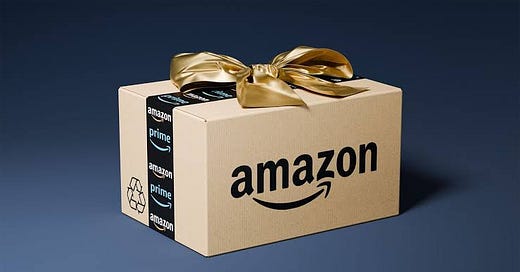Learnings from Amazon Shareholder Letters
He wanted to create history which was set through his "It's All About Long Term" declaration in 1997 shareholder letter.
Till 1997, people were used to the name of Amazon with the biggest river in the world. Then the name became familiar with the online commerce world. Who knew the name of the biggest river would be parallel with the name of the biggest e-retailer!
It's a case study on Amazon.com which is now familiar with all of us was once an online book store only. Over the years, as the business was growing, Amazon was adding new products to their website regularly leading to more customer demand as well as more sales.
For any business to grow multifold, size of the opportunity must be huge which Amazon was catering to. The industry was at a nascent stage. Competition was intense. Yet Mr. Bezos's visionary, bold and customer centric approach made Amazon what it is today. He wanted to create history which was set through his "It's All About Long Term" declaration in 1997 shareholder letter.
He mentions about free cash flow several times in his letters. According to him, this is the most important financial metric to evaluate a business. He has shown it elaborately in his 2004 letter. It's a good read for everyone to know more about how earnings growth could deceive us if there is negative free cash flow.
One other thing that stands out is the same scale economy shared concept which we came to know from Nomad Partnership shareholder letters. We see how Amazon has used the concept so skillfully. This is why Amazon became one of the best investments by Nomad Partners. When you pass on the benefits to your customers you gain a certain advantage over others who don't.
According to Mr. Bezos, there are 4 characteristics of a dreamy business (written in 2014 letter).
1. Customers love it
2. It can grow to very large size
3. It has strong return on capital
4. It's durable in time
Let me add his investment thesis which was set out by him just after the IPO in his 1997 letter.
1. We will continue to make investment decisions in light of long term market leadership considerations rater than short term profitability considerations or short term Wall Street reactions.
2. We will continue to measure our programs and the effectiveness of our investments analytically to jettison those that do not provide acceptable returns and to step up our investment in those that work best. We will continue to learn from both our successes and our failures.
3. We will make bold rather than timid investment decisions where we see a sufficient probability of gaining market leadership advantages. Some of these investments will pay off, others will not, and we will have learned another valuable lesson in either case.
4. When forced to choose between optimizing the appearance of our GAAP accounting and maximizing the present value of future cash flows, we will take the cash flows.
5. We will share our strategic thought processes with you when we make bold choices (to the extent competitive pressures allow), so that you may evaluate for yourselves whether we are making rational long term leadership investments.
6. We will work hard to spend wisely and maintain our lean culture. We understand the importance of continuously reinforcing a cost conscious culture, particularly in a business incurring net losses.
7. We will balance our focus on growth with emphasis on long term profitability and capital management. At this stage, we choose to prioritize growth because we believe that scale is central to achieving the potential of our business model.
8. We will continue to focus on hiring and retaining versatile and talented employees and continue to weight their compensation to stock options rather than cash. We know our success will be largely affected by our ability to attract and retain a motivated employee base, each pf whom must think alike, and therefore must actually be an owner.
Amazon has made several bold bets of which a few stood out, some of them failed and the rest did moderately. Businesses that stood out are Marketplace, Prime and AWS.
Sometimes, judgement-based decisions are more important than numerical-based decisions. Mr. Bezos in his 2005 letter showed the difference between math-based decisions and judgement-based decisions very aptly. When it was time to increase the prices of the products, they intentionally lowered the prices to gain the long term edge. As per his words,
“Math-based decisions command wide agreement whereas judgement-based decisions are rightly debated and often controversial, at least until put into practise and demonstrated. Any institution unwilling to endure controversy must limit itself to decisions of the first type. In our view, doing so would not only limit controversy, it would significantly limit innovation and long term value creation.”
Thanks for reading
Take care
Rabi
Disclaimer: I'm not SEBI registered. This content is for educational purposes only. Do your own diligence.




